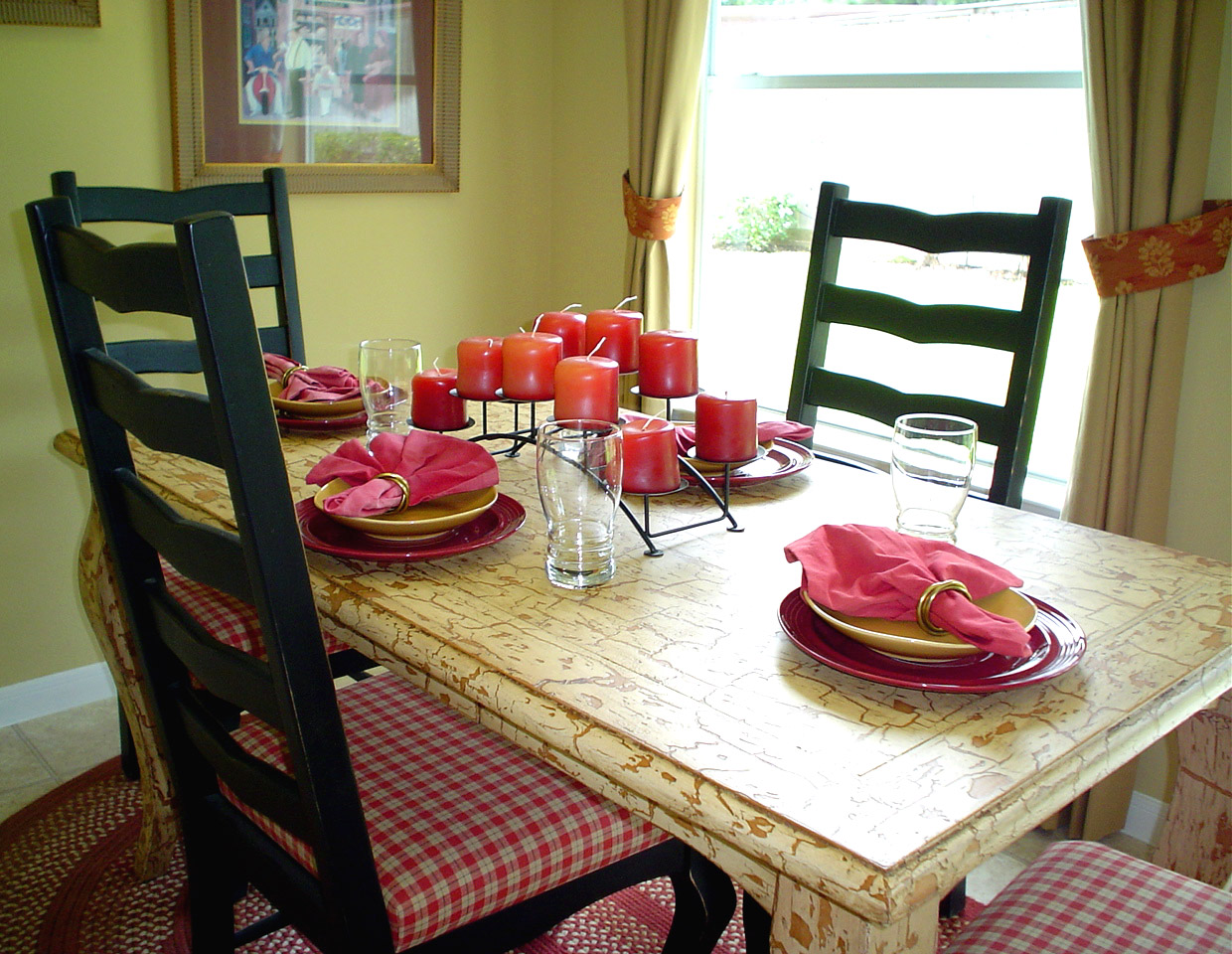Painting over stained wood, trim, and furniture can be difficult because the chemical properties of the stain make it hard for paint to stick to the surface. With the correct materials and instructions though, it is possible.
How to Paint over Stained Wood
Follow these steps for a successful paint job:
Step 1: Make sure that your wood is in good shape. Repair cracks if there are any. Unrepaired cracks will cause the new paint to peel because water can seep behind the paint film.
Step 2: Mix ¼ cup of trisodium phosphate (TSP) and a gallon of water. Using a sponge apply the solution onto the surface to clean it. Let the surface dry completely. This can take as long as two days, especially if you live in a humid area.
TSP can be bought in any hardware store. However, Krud-Kutter can be used as an alternative if you already have the latter. Also, remember to use gloves when working with the solution.
Step 3: Stained surfaces are usually sealed with varnish or glossy finishes. If this is the case, sand the surface manually or using a hand sander.
Step 4: Clean the surface using a damp rag.
Step 5: Use a natural-bristled paintbrush (or a roller brush) to apply a high quality oil-based primer on flat surfaces (Learn about different paintbrushes). Let dry. One good primer is shellac, as it can bond well to both oil- and water-based finishes and undercoats. When using shellac, make sure never to use synthetic paintbrushes. For best results, two coats of primer should be applied. The first coat should be thinned a little so that it penetrates the wood better.
Some primers may also need sanding. If you happen to use this kind of primer, use very fine sandpaper to carefully sand the surface, making sure not to sand through the layer. Use a damp rag to remove dust.
Step 6: Tape areas that you don’t want to paint.
Step 7: Apply paint using a roller or paintbrush. Usually, any kind of paint will be able to adhere to a primed surface. However, latex- or oil-based paints may be your best choice. (Learn about the differences between oil-based and water-based polyurethane paint)
To avoid brush marks, keep the brush well coated. Let dry thoroughly.
Step 8: If another coat of paint is desired, lightly sand the surface, wipe it with deglosser or liquid sander, and wipe all the dust off.
Step 9: Apply the second coat and let set.
It may be quite a handful of work but painting over stained wood is not as difficult as it seems. Follow the instructions above and you will have a professional looking newly painted wood surface in no time! These steps may also be used to paint over stained wood trims and furniture, with a few tweaks.
Painting over Stained Wood Trim
Painting over stained wood trim is similar to painting over stained wood.
Step 1: Mix ½ cup trisodium phosphate with one gallon of warm water. Scrub this mixture on the trim with a scrub brush. Rinse with a sponge and water. Let dry.
Step 2: Remove any shine or gloss from the surface by sanding it with 120-grit sandpaper. Strokes should be quick and short. Remove the dust.
Step 3: Tape the borders of the trim to protect any area that doesn’t need to be painted.
Step 4: Use a paintbrush to apply a thin coat of primer onto the surface. Make sure to brush in the direction of the trim. Let dry overnight.
Step 5: Apply a coat of gloss paint and let dry.
Step 6: Lightly sand the surface and wipe away the dust.
Step 7: Apply another coat of paint and remove the tape.
Painting over Stained Wood Furniture
Painting over stained wood furniture is also very similar to the other two mentioned above.
Step 1: Remove dirt and other particles by thoroughly washing the furniture with a scouring pad and all-purpose cleaner.
Step 2: Roughen the surface by sanding it with 120-, 150-, and 180-grit sandpaper. Start with the 120-grit going up.
Step 3: Vacuum the dust from the sanding and use a tack rag to wipe the surface.
Step 4: Wipe the surface again but this time with denatured alcohol.
Step 5: Use newspaper and tape to cover the surrounding areas.
Step 6: Apply primer on the surface of your furniture going with the grain first and then against the grain.
Step 7: Apply the first coat of paint and let dry.
Step 8:Add 2-3 more coats of paint according to your preference.



Hi,love your site I have these old solid wood pieces from my aunt and I want to paint them metallic (brushed nickle or pewter). Can you give me any ideas that can help me make these as nice as yours. I’m a full time Pharmacist and I love decorating and flipping houses but so little time. I tried to copy and paste pics without success.
You can upload the pictures to imgur.com or tinypic.com and then post the link here so you can get painting ideas from the community. Make sure to remove any identifiable information. Good luck!